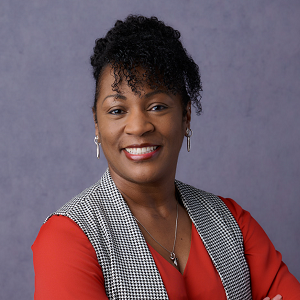I would tell anyone that I’m a business leader, and my expertise happens to be in human resources.
Lori Smith joined Community First Credit Union of Florida ($2.8B, Jacksonville, FL) in July 2021 with more than 20 years of experience in staff development and relations. The chief human resources officer previously held the role of vice president of HR and organizational development at United Way of Northeast Florida and regional HR manager for State Farm Insurance.
At Community First, Smith has helped the north Florida cooperative navigate shifts in workforce expectations and workplace dynamics, supporting the post-pandemic workforce, building collaboration at the top, developing a more strategic leadership bench, and more.
On leading HR through a business leader’s lens …

Lori Smith: I would tell anyone that I’m a business leader, and my expertise happens to be in human resources. I’m very comfortable having any conversation as it relates to our organization.
For years, HR was only invited to the conversation when it came to hiring, benefits, and other parts of our traditional role. We were not seen as a strategic business partner. But as I work to help my peers and other employees, I demonstrate that everything I do is about the business of financial services.
I’m always thirsty for knowledge. I want to know about rate strategies, promotional campaigns, and more. I want to be able to contribute to discussions about lending paper, underwriting, and loan participation. This supports the organization’s bottom line, not just HR. I try not to limit my thinking. I consistently think globally in determining what can be done to help team members support one another while going above and beyond to support our members. This helps me think inclusively and avoid siloed thinking.
On the forest, the trees, and a seat at the table …
LS: My former CEO and my current CEO have made sure HR has a seat at the table. When we make strategic decisions, I’m included in those decisions.
This enables me to position my teams to support the strategy. It is important to be able to see both the forest and the trees. I find that using a strategic mindset as my starting filter works the best. I approach initially from a strategic lens, then move to the specifics as both perspectives are essential.
On supporting the post-pandemic workforce …
LS: Leadership has evolved. Managing on-site teams differs greatly from managing hybrid or remote ones. It’s crucial to be intentional about location and engagement, whether for recognition events or training opportunities.
We learned during the pandemic and the Great Resignation that flexibility isn’t just a perk — it’s essential. If we want to keep great people, we have to meet them where they are and invest in their development regardless of where they sit. That means offering virtual conferences, webinars, online training — all with the same energy we used to bring to in-person programs.
We’ve also worked hard to make sure recognition, feedback, and performance development aren’t limited by physical location. Culture doesn’t come from proximity — it comes from intention. We’re finding new ways to make people feel seen, supported, and included. That’s what the post-pandemic workforce expects — and deserves.
On building collaboration across and down …
Pro Tip
Conversations can grow quickly. It’s important to stay focused, gather insights, and move forward without getting off track. Done right, it leads to stronger decisions and a more collaborative culture.
LS: Collaboration is one of our core values, and our leadership is highly focused on building it across departments. We believe breaking down silos is essential for stronger enterprise-level thinking.
One of the main ways we’ve put this into action is by building cross-functional committees. For example, each of our scorecard metrics has a dedicated committee made up of employees from different departments — not just those responsible for that specific metric. You’ll find marketing, HR, finance, and other teams represented in each group.
We were deliberate about this structure to make sure that problem-solving and strategic thinking aren’t limited to a single perspective.
More importantly, we’ve also empowered our next level of leadership to run these committees. This creates ownership, builds leadership skills, and encourages broader thinking at all levels. Modeling this cross-functional approach from the top ensures that collaboration isn’t just a buzzword — it’s built into how we operate daily.
CreditUnions.com’s “On Leadership” series spotlights notable leaders across the credit union landscape by discovering how they joined the movement, learning what makes them tick, uncovering career lessons and successes, and seeking advice for the future of the movement. Read the whole series today.
On supporting leadership development …
LS: I introduced a Leadership Development Assignment (LDA) program last year to give employees the chance to move into different departments and broaden their experience skills, and capabilities.
One branch employee who had hit a ceiling in her role moved into our lending department — a completely new area for her. Instead of just touching on lending at the surface like she did in the branch, she’s building deep expertise and growing her understanding of the business.
She now leads a team in the consumer lending department, demonstrating that cross-department opportunities can transform careers and enhance the organization.
On building leadership and a bench …
LS: Employees need to see senior leaders collaborating — co-leading projects, sharing platforms, modeling unity. When our CIO and I led the intranet launch, it wasn’t about whose project it was, it was about creating a central communication platform for all employees, especially the 70% who work remotely. We built a cross-functional team and led it as one unit, sending a powerful message about collaboration.
I try to think about what leaders will need in three to five years — not just what’s urgent now. Looking ahead ensures progressive thinking and helps to ensure we create an environment where we can attract and retain top talent.
This interview has been edited and condensed.